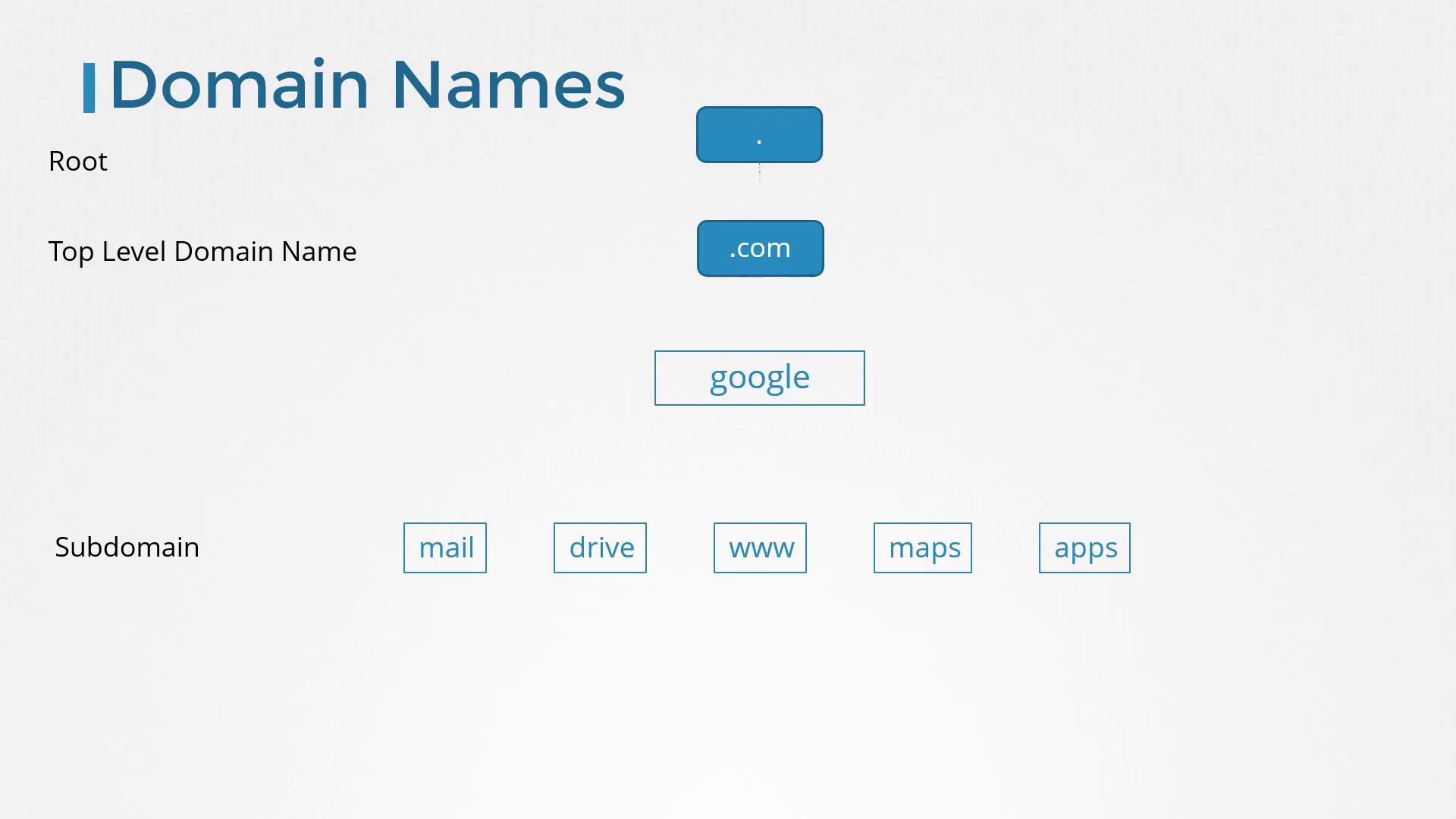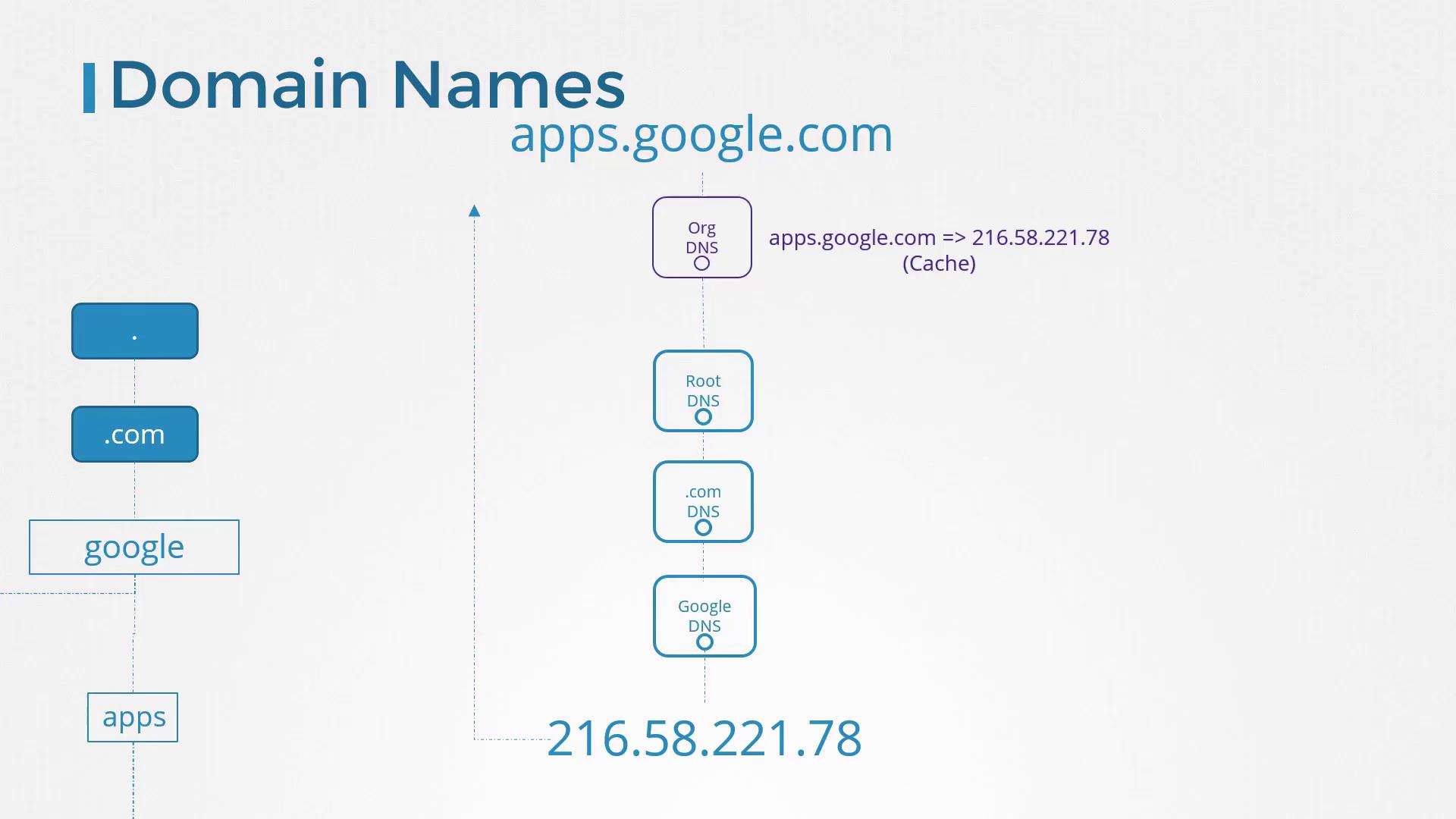CKA Certification Course - Certified Kubernetes Administrator
Networking
Prerequisite DNS
In this article, we introduce DNS for Linux beginners with an SEO-friendly guide that covers basic concepts, configuration steps, and hands-on labs to challenge your understanding of DNS. Learn how local name resolution works and how to transition from simple /etc/hosts setups to a full-blown centralized DNS server.
Understanding Local Name Resolution
Imagine you have two computers on the same network—Computer A with IP address 192.168.1.10 and Computer B with IP address 192.168.1.11. You can easily ping Computer B from Computer A using its IP address:
ping 192.168.1.11
Reply from 192.168.1.11: bytes=32 time=4ms TTL=117
Reply from 192.168.1.11: bytes=32 time=4ms TTL=117
Suppose Computer B offers database services. Instead of remembering its IP address, you'll refer to it by a name, for example "db". However, if you immediately try to ping "db" from Computer A, the name remains unrecognized:
ping db
ping: unknown host db
To make "db" recognizable, add an entry in the /etc/hosts file on Computer A. This informs the system that Computer B (192.168.1.11) is known as "db":
cat >> /etc/hosts
192.168.1.11 db
After this change, pings to "db" resolve correctly:
ping db
PING db (192.168.1.11) 56(84) bytes of data.
64 bytes from db (192.168.1.11): icmp_seq=1 ttl=64 time=0.052 ms
64 bytes from db (192.168.1.11): icmp_seq=2 ttl=64 time=0.079 ms
Note
Once you trust the mappings in /etc/hosts, the system does not verify whether the actual hostname (e.g., Computer B's real name) matches the alias you defined.
You can even create multiple aliases for a single IP address. For instance, you might convince Computer A that Computer B is also known as "www.google.com":
cat >> /etc/hosts
192.168.1.11 db
192.168.1.11 www.google.com
ping db
PING db (192.168.1.11) 56(84) bytes of data.
64 bytes from db (192.168.1.11): icmp_seq=1 ttl=64 time=0.052 ms
64 bytes from db (192.168.1.11): icmp_seq=2 ttl=64 time=0.079 ms
ping www.google.com
PING www.google.com (192.168.1.11) 56(84) bytes of data.
64 bytes from www.google.com (192.168.1.11): icmp_seq=1 ttl=64 time=0.052 ms
64 bytes from www.google.com (192.168.1.11): icmp_seq=2 ttl=64 time=0.079 ms
Every time you reference a host by name—whether by ping, SSH, or curl—the system consults the /etc/hosts file for IP address mapping. This process is called name resolution:
cat >> /etc/hosts
192.168.1.11 db
192.168.1.11 www.google.com
ping db
ssh db
curl http://www.google.com
Warning
While managing local /etc/hosts files works for small networks, it becomes difficult to maintain as the number of systems grows and IP addresses change.
Scaling with a Centralized DNS Server
To overcome the challenges of managing numerous local host mappings, organizations consolidate all mappings on a centralized DNS server. Suppose your centralized DNS server is at IP address 192.168.1.100. You configure each host to use this server by editing the /etc/resolv.conf file:
cat /etc/resolv.conf
nameserver 192.168.1.100
Once configured, any hostname that is not found in /etc/hosts is resolved via the DNS server. If an IP address changes, you update the DNS server's records instead of modifying each system individually. Although local /etc/hosts entries—which are useful for test servers—are still honored, they take precedence over DNS queries. The resolution order is defined in /etc/nsswitch.conf:
cat /etc/nsswitch.conf
...
hosts: files dns
...
In this configuration, the system first searches the /etc/hosts file for a hostname. If a match is not found, it then queries the DNS server.
Now, if you try pinging a hostname not found in either /etc/hosts or the DNS server (e.g., www.facebook.com), the resolution fails:
cat >> /etc/hosts
192.168.1.115 test
cat /etc/nsswitch.conf
...
hosts: files dns
...
ping www.facebook.com
ping: www.facebook.com: Temporary failure in name resolution
To resolve external domains like Facebook, add a public DNS server (for example, Google's 8.8.8.8) or configure your internal DNS server to forward unresolved queries to a public DNS resolver.
Domain Names and Structure
Up until now, we have been resolving internal hostnames such as web, db, and nfs. But what is a domain name? A domain name (like www.facebook.com) is composed of parts separated by dots:
• The top-level domain (TLD) appears at the end (e.g., .com, .net, .edu, .org).
• The domain name precedes the TLD (e.g., facebook in www.facebook.com).
• Any segment before the domain name is considered a subdomain (e.g., www).
For instance, consider Google's domain: • The root is implicit.
• ".com" is the TLD.
• "google" is the main domain.
• "www" is a subdomain.
Subdomains allow organizations to separate services. Examples from Google include maps.google.com for maps, drive.google.com for storage, and mail.google.com for email.

When your organization attempts to access a domain like apps.google.com, the internal DNS server first tries to resolve the name. Failing that, it forwards the request through a hierarchical process: a root DNS server directs it to a .com DNS server, which then points to Google's DNS server. The IP address is returned and cached temporarily to expedite future queries.

Similarly, organizations like mycompany.com can structure their domain by using subdomains for different services:
- www.mycompany.com: External website
- mail.mycompany.com: Email service
- drive.mycompany.com: Storage solution
- payroll.mycompany.com: Payroll systems
- hr.mycompany.com: Human resources
Using Search Domains for Short Names
Within many organizations, it is often convenient to use short hostnames. To resolve a short name (for example, "web") to its fully qualified domain name (FQDN, such as web.mycompany.com), add a search domain to your /etc/resolv.conf file:
cat >> /etc/resolv.conf
nameserver 192.168.1.100
search mycompany.com
ping web
PING web (192.168.1.10) 56(84) bytes of data.
64 bytes from web (192.168.1.10): icmp_seq=1 ttl=64 time=0.052 ms
64 bytes from web (192.168.1.10): icmp_seq=2 ttl=64 time=0.079 ms
Without the proper search domain, attempts to resolve "web" may fail:
ping web
ping: web: Temporary failure in name resolution
ping web.mycompany.com
PING web.mycompany.com (192.168.1.10) 56(84) bytes of data.
64 bytes from web.mycompany.com (192.168.1.10): ttl=64 time=0.052 ms
You can also specify multiple search domains. In the following example, the system will sequentially append each provided domain until a match is found:
cat >> /etc/resolv.conf
nameserver 192.168.1.100
search mycompany.com prod.mycompany.com
ping web
PING web.mycompany.com (192.168.1.10) 56(84) bytes of data.
64 bytes from web.mycompany.com (192.168.1.10): icmp_seq=1 ttl=64 time=0.052 ms
64 bytes from web.mycompany.com (192.168.1.10): icmp_seq=2 ttl=64 time=0.079 ms
ping web.mycompany.com
PING web.mycompany.com (192.168.1.10) 56(84) bytes of data.
64 bytes from web.mycompany.com (192.168.1.10): ttl=64 time=0.052 ms
ping web.mvcompany.com
ping: web: Temporary failure in name resolution
Overview of Common DNS Record Types
DNS records map hostnames to IP addresses and serve various other purposes. Here is an overview of some common DNS record types:
| Record Type | Hostname | Address/Mapping |
|---|---|---|
| A | web-server | Maps hostname to an IPv4 address (e.g., 192.168.1.1) |
| AAAA | web-server | Maps hostname to an IPv6 address (e.g., 2001:0db8:85a3:0000:0000:8a2e:0370:7334) |
| CNAME | food.web-server | Aliases one hostname to another (e.g., aliasing to eat.web-server or hungry.web-server) |
A records handle IPv4 addresses, AAAA records are for IPv6, and CNAME records allow hostname aliasing.
Testing DNS Resolution Tools
While ping is the most common tool for verifying basic DNS resolution, utilities like nslookup and dig provide more detailed insights.
Using nslookup and dig
• The nslookup command does not consider /etc/hosts entries and only queries the configured DNS server.
• The dig command offers comprehensive details about DNS queries.
Example: nslookup
> nslookup www.google.com
Server: 8.8.8.8
Address: 8.8.8.8#53
Non-authoritative answer:
Name: www.google.com
Address: 172.217.0.132
Example: dig
dig www.google.com
; <<>> DiG 9.10.3-P4-Ubuntu <<>> www.google.com
;; global options: +cmd
;; Got answer:
;; ->>HEADER<<- opcode: QUERY, status: NOERROR, id: 28065
;; flags: qr rd ra; QUERY: 1, ANSWER: 6, AUTHORITY: 0, ADDITIONAL: 1
;; OPT PSEUDOSECTION:
; EDNS: version: 0, flags:; udp: 512
;; QUESTION SECTION:
;www.google.com. IN A
;; ANSWER SECTION:
www.google.com. 245 IN A 64.233.177.103
www.google.com. 245 IN A 64.233.177.105
www.google.com. 245 IN A 64.233.177.147
www.google.com. 245 IN A 64.233.177.106
www.google.com. 245 IN A 64.233.177.104
www.google.com. 245 IN A 64.233.177.99
;; Query time: 5 msec
;; SERVER: 8.8.8.8#53(8.8.8.8)
;; WHEN: Sun Mar 24 04:34:33 UTC 2019
;; MSG SIZE rcvd: 139
Next Steps
In upcoming practice exercises, you will configure and troubleshoot DNS on actual systems using tools like dig and nslookup. Later in the course, you will also learn how to set up an actual DNS server using CoreDNS as the DNS solution.
Thank you for reading this article. Enjoy exploring the intricacies of DNS and optimizing your network’s name resolution process!
Watch Video
Watch video content